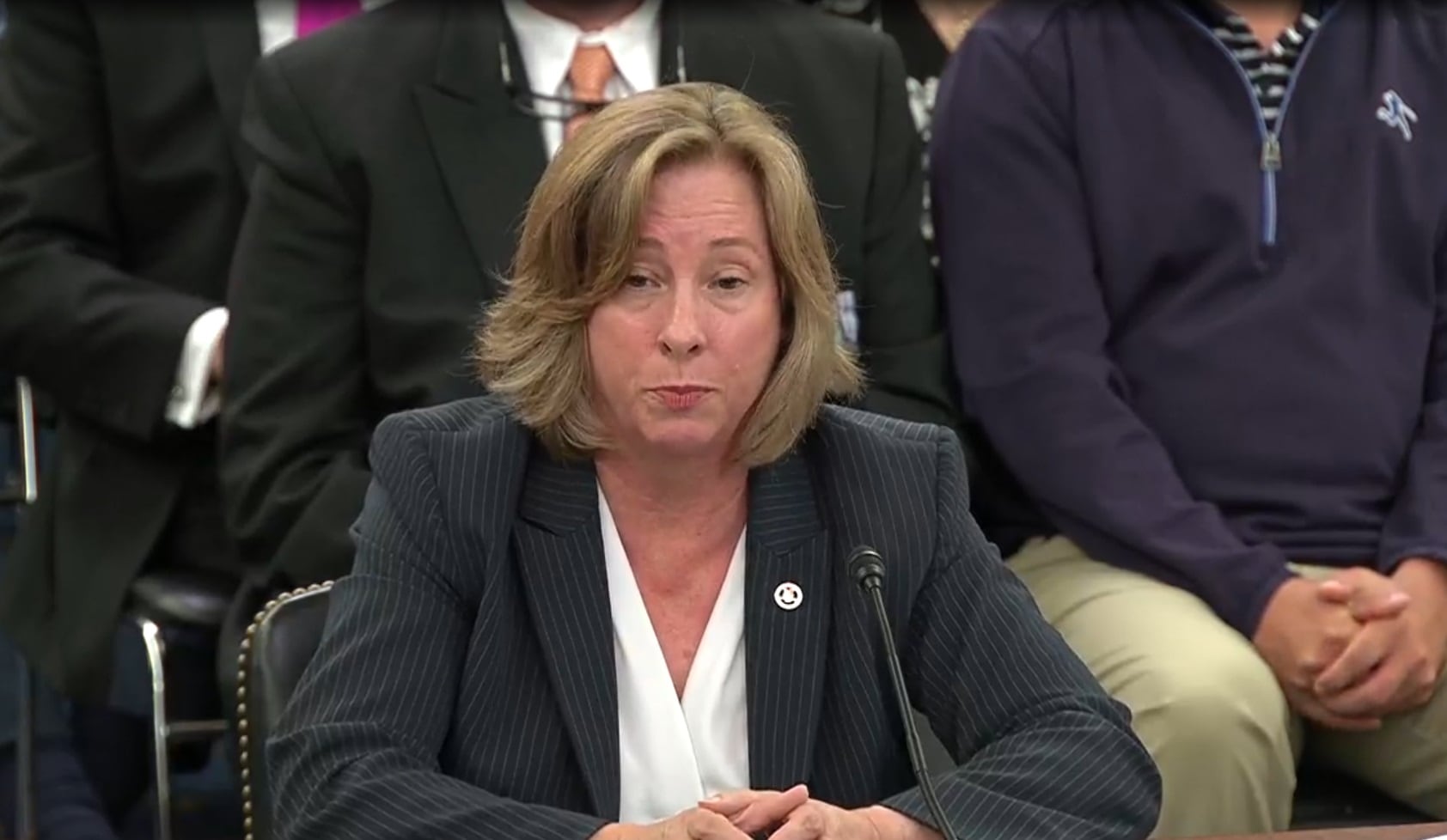Lt. Col. John Davis said the enemy in Afghanistan had gotten used to the Apache AH-64D. The enemy It knew roughly how long the Apache it would take to get there, how long it could engage, when it would have to leave for fuel and when it might come back.
The first battalion commander to deploy the new Apache AH-64E Guardian in combat said that's why the new model managed to scare the bejeezus out of a confused enemy.
"Now the E shows up and now the enemy is literally on the ground, 'I can't move,'" Davis said. "When is this guy going to go get gas?"
Praise for the AH-64E Apache helicopter, along with updates on the Chinook CH-47F's continued roll-out and future plans for that program, dominated a the presentation for media by Boeing and the Army at Boeing's Washington, D.C.,-area headquarters in Arlington.
"I will absolutely say this is the most lethal, versatile Apache thus far," said Davis, an Apache pilot himself. "It was a game-changer for the way we deployed its capabilities against the threats we had in Afghanistan and the way the theater was collapsing down" and forward operating bases (with Forward Operational Bases closing)."
The Army has begun discussions about a deal to buy about 240 AH-64E Apache helicopters from Boeing from 2017 to 2021 in a multiyear deal. Such multi-year deals require approval of the defense secretary and Congress and generally must show significant savings, according to federal acquisition policy. Secretary of Defense and Congressional approval, and generally must produce significant savings
Aside from an estimated top speed (188 mph) about 20 mph faster than the AH-64D, the AH-64E can hang out longer once it reaches the battle. Given about a 15-minute trip to the field, the old model can stay in the air in a fight for about 2½ to three hours. The Guardian can fight for about three to 3½ hours.
The Army provided Boeing some feedback after the deployment including a desire for extended-range fuel tanks, which would increase even further how far the aircraft could fly and how long it could remain in battle. [[Not clear, was Army saying the fuel tanks were effective, or were they saying they needed more capability there?]]
The E-model can also control unmanned aircraft vehicles such as the Gray Eagle via Tactical Control Data Link, giving it a better view of the situation on the ground, including from outside of the range where enemies could hear it coming.
The Army received, trained and fielded the E model in 14 months before it they first saw combat. Davis had said earlier that pilots essentially had nothing but praise for the aircraft expected by the Army to also have a longer life expectancy than the D model.
[[Does the E have any other cool new capabilities? The Army document has a lot of detail.]]
One drawback has been that the on-board data link, the TCDL of the E model, is an advanced system not universal to all the military's components; Davis said that in post-mission briefings with Boeing the Army communicated that it would like to add the older Surveillance and Control Data Link along with TCDL.
The Army program managers and Boeing representatives also discussed advances in the Chinook CH-47 transport helicopter, the Army's fastest at about 196 mph. The Army seeks to, in an affordable manner, keep that program relevant into 2060, said Col. Rob Barrie.
In the nearer future, the Army continues to roll out the CH-47F, which features a max speed of 193 mph and capable of carrying a useful load of about 24,000 pounds.
By 2019, the CH-47D should be retired, Barrie said.
The Army didn't address the impact of the bigger-picture high tech Future Vertical Lift program, with Program Executive Office Aviation spokeswoman Sophia Bledsoe saying the program is too early in the research and development process to say how or when it might affect the Apache and Chinook programs.
FVL aims to revolutionize the military's rotary arsenal, likely with the hybrid technology similar to the Osprey V-22 used by the Marines and Air Force, but not the Army.
The Osprey can vertically take off with helicopter rotors that can tilt into position so the vehicle can cruise like a turboprop airplane, greatly increasing max speed and range.




